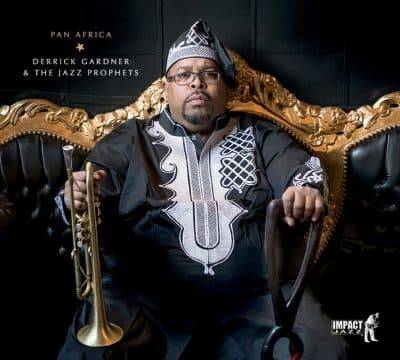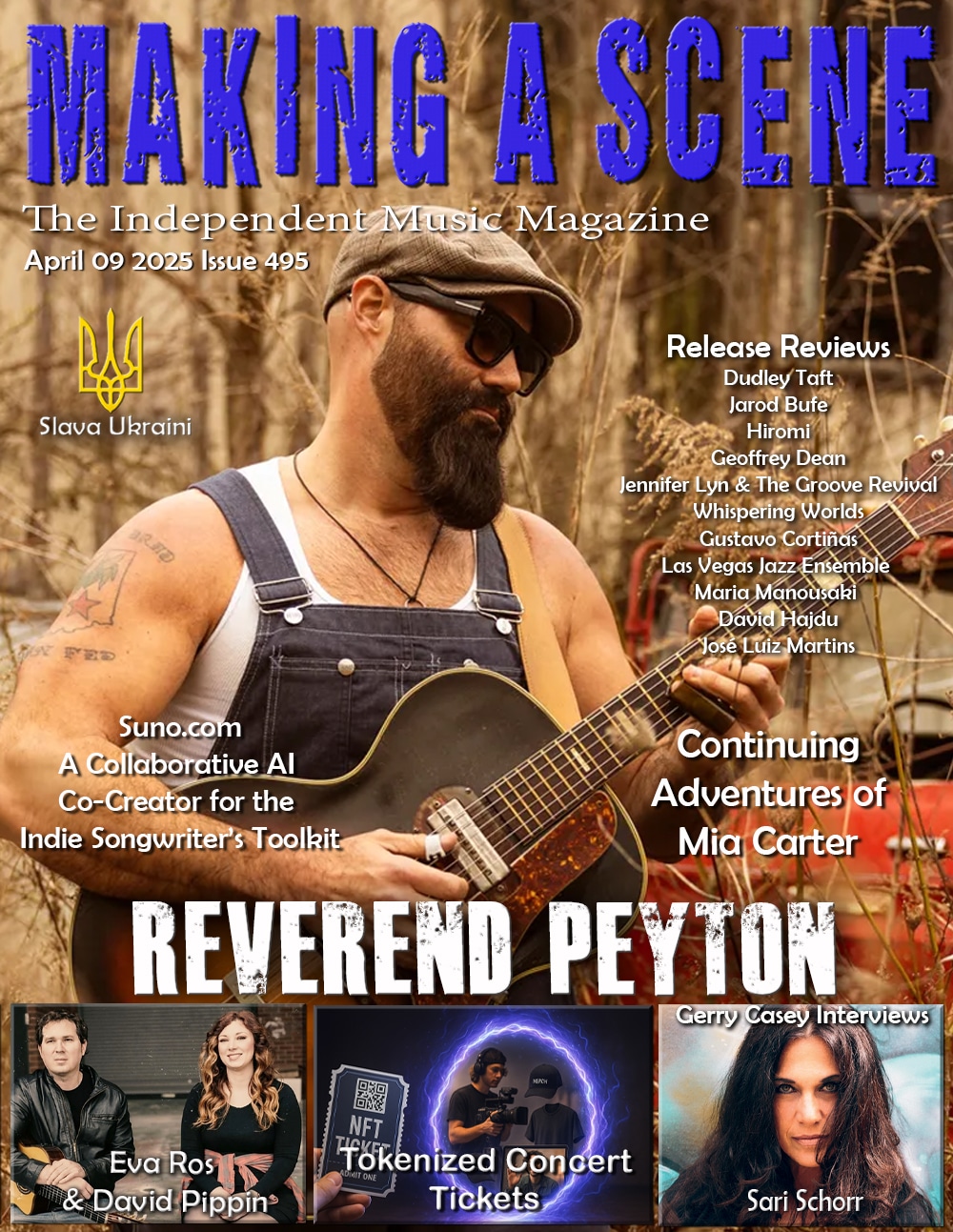Derrick Gardner & The Jazz Prophets Pan Africa
 Derrick Gardner & The Jazz Prophets
Derrick Gardner & The Jazz Prophets
Pan Africa
Impact Jazz
Trumpeter, composer, and bandleader Derrick Gardner has been regarded prominently ever since his 2005 debut with Slim Goodie. He has also received international acclaim for his 18-piece ensemble Derrick Gardner & The Big dig! Band, highlighted by their critically acclaimed 2020 recording debut Still I Rise, which we covered on these pages. Here, however we have Gardner leading his enduring sextet, the Jazz Prophets, in an album that is partly Afro-Futurism, as depicted by the album cover Sun Ra-like photo of Gardner but mainly African in theme. The concept was inspired by a momentous visit to Ghana, where Gardner was deeply impacted by his ancestral roots. Thus, we have African rhythms and traditional African strains coursing through the entire album played by his brother, trombonist Vincent Gardner, alto and tenor saxophonist Robert Dixon, pianist George Caldwell, bassist Obasi Akoto, and percussionist Kweku Sumbry on the drum kit and African percussion. They comprise his longstanding sextet, which has remained intact since 1991.
These nine tracks strive to honor different facets of the African diaspora. A rhythmic motif lies at the center of each track, acting as the pulse, the fulcrum from which each sextet member builds his individual statement(s). They storm out of the gate, breathing fire. The opener “Djembe Kan” highlights the djembe, a West African drum, played by Sumbry whose unaccompanied performance initiates a welcoming call eventually joined by rather shrill voice-like cries from the leader on trumpet and Dixon on alto, as they morph into Gardner’s arrangement of Jackie McLean’s “Appointment in Ghana,” with all three horns blazing. The leader takes the first bow followed by an intense Dixon, a more deliberate start but an energetic turn from brother Vincent before Sumbry switches to the kit and the ensemble restates the head explosively. “10,000 Ships,” speaks rather obviously to the slave trade. Composer Dixon opens the song with a somber energy, before Caldwell introduces warm, mysterious chords. The horns provide a haunting, harmonized melody on top. Dixon, Sumbry and the bandleader all take spirited turns; bringing back that shrillness and in the leader’s case, pointed jabs that reflect the cries and pains of suffering these Africans endured on their journeys away from their homeland. The tempo and intensity builds, as if to connote a rough excursion at sea.
Another standout is “The Sixth Village.” In 2006, the African diaspora was recognized as the sixth region of the African union, along with the north, south, east, west and central counterparts. So, this tune becomes celebratory and orchestral in tone. Sumbry’s frenetic percussion and Akoto’s sturdy bass underpin the horns, all of which soar majestically, culminating joyously. “Highlife Suite” features strong kit work from Sumbry and ensemble horns that yield to brief statements from each before yielding to a bass-drum exchange that resembles a rhythmic dance. The leader than enters forcefully as the rhythm becomes even more pronounced through both the trumpet and saxophone solos. “Blues for the Diaspora” is a minor blues on which Gardner uses his horn to beckon and reflect. Yet, to this listener, in terms of the melody, there are some NOLA strains evoking “St. James Infirmary.” But the harmonies create a bit of dissonance, conveying a sense of mourning for the ancestors.
The next two pieces, based on the titles are about particular characters that Gardner met or learned about in his travels. “Vicente, the African Mestizo” is a brassy, uplifting number with poignant solos from Vincent, Dixon, Caldwell, and Akoto with a final coda from the leader. “NKRUMAH ’da RULAH” begins with chanting and mostly lower register statements from the two Gardners that give it a foreboding tone that re-emerges much brighter after each drum break. The closer, “Assin Manso … The Last Bath,” is in tribute to Assin Manso, a city located in the central region of Ghana. The city contains the Assin Manso River where captured Africans took their final baths on African soil before being marched to the Ghanaian slave dungeons of Elmina and Cape Coast. Sumbry finishes the mournful song with djembe and drums, concluding the album on a reflective note — at once celebrating the vibrancy of Africa and commemorating its darkest days.
The musicianship is sharp throughout, visually evocative, and deeply emotional. Gardner has delivered a moving tribute to his ancestry.
- Jim Hynes
Buy Us a Cup of Coffee!
Join the movement in supporting Making a Scene, the premier independent resource for both emerging musicians and the dedicated fans who champion them.
We showcase this vibrant community that celebrates the raw talent and creative spirit driving the music industry forward. From insightful articles and in-depth interviews to exclusive content and insider tips, Making a Scene empowers artists to thrive and fans to discover their next favorite sound.
Together, let’s amplify the voices of independent musicians and forge unforgettable connections through the power of music
Make a one-time donation
Make a monthly donation
Make a yearly donation
Buy us a cup of Coffee!
Or enter a custom amount
Your contribution is appreciated.
Your contribution is appreciated.
Your contribution is appreciated.
DonateDonate monthlyDonate yearlyYou can donate directly through Paypal!
Subscribe to Our Newsletter
Discover more from Making A Scene!
Subscribe to get the latest posts sent to your email.













































